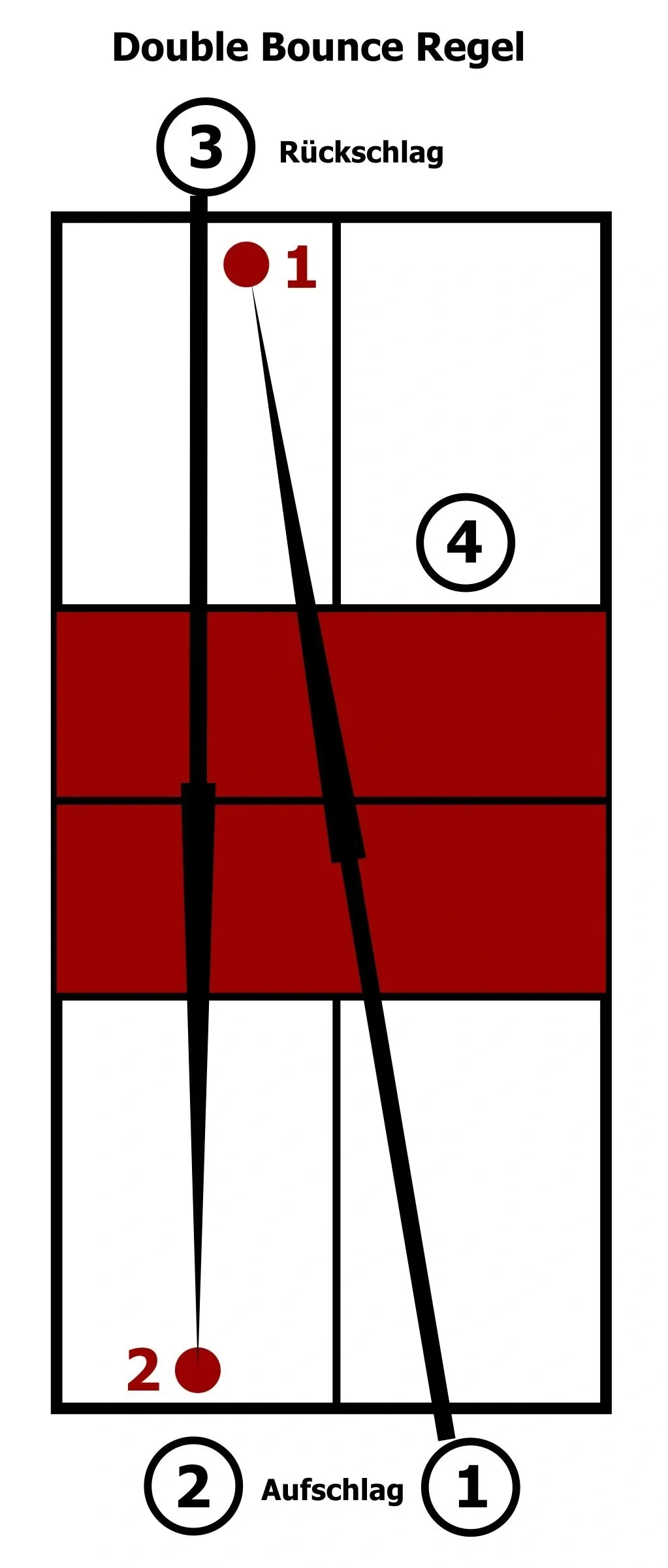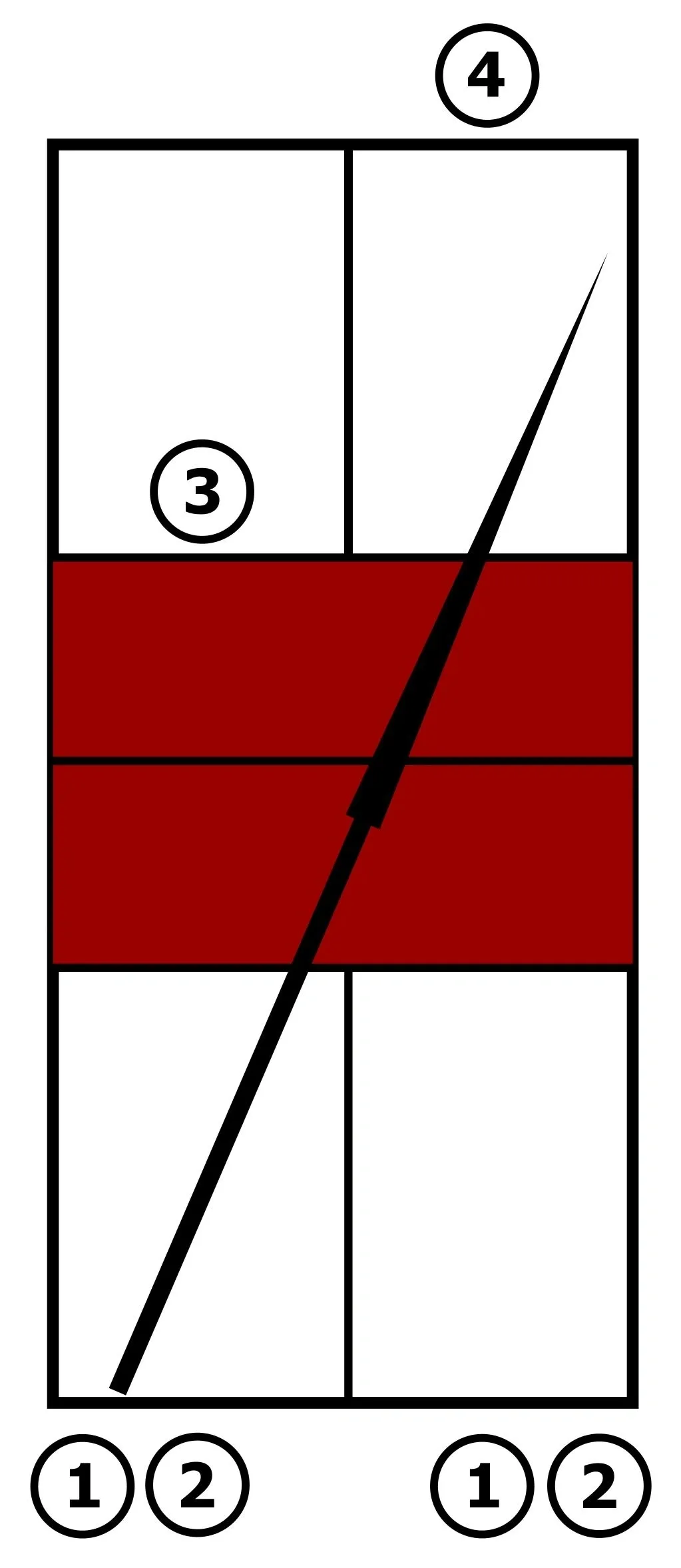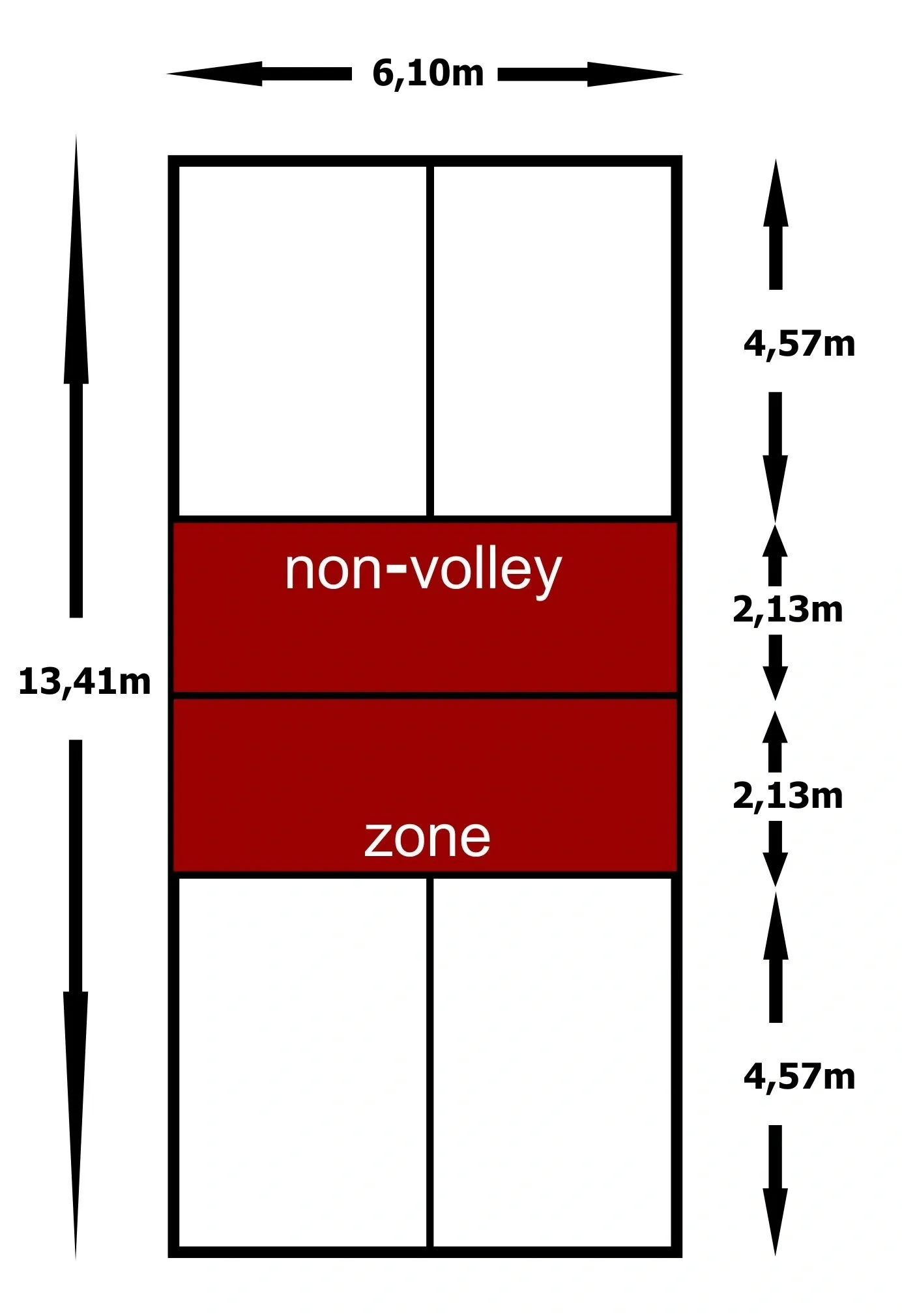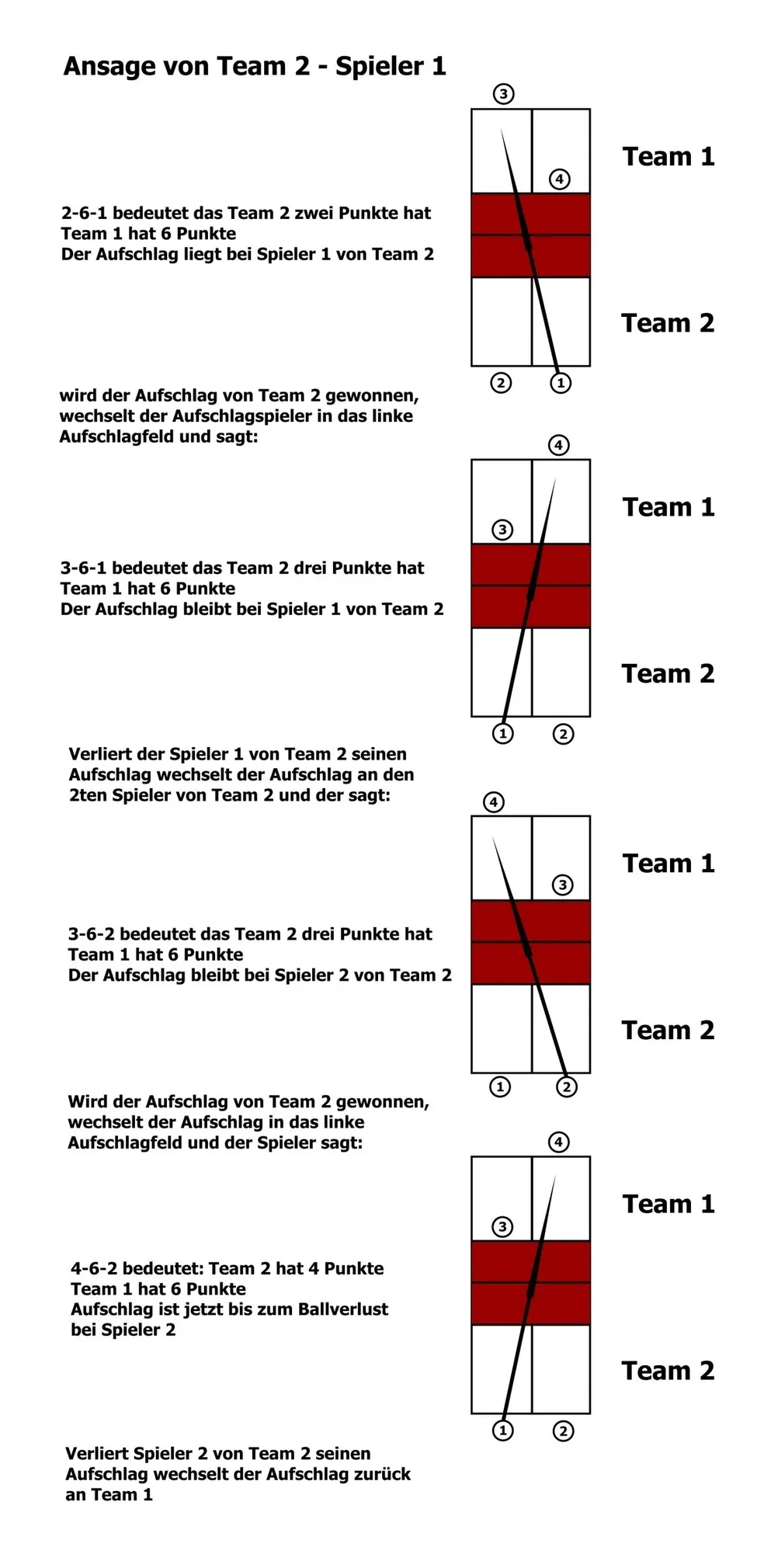Here is a simple introduction to how to play pickleball and how to score.
This introduction is intended for hobby players and the most important rules for the first steps in the training area are explained. The tournament rules with the official rule book of the DPB can also be found under Rules.
Surcharge
- * The first serve of each team always comes from the right side of the court. It can be served once in the air without the ball touching the ground, or you can let the ball fall from your hand and bounce and then hit it.
- * The serve is started with both feet behind the baseline, neither foot may touch the baseline or the court until the ball is struck.
- * Only one serve is allowed. If the serve is made to the net, play continues.
- * The serve is made from below and the ball contact is under the hip.
- * The surface of the racket must be below the wrist.
- * The server must count the score aloud before touching the ball, and the score is given in three numbers: the server's score, the receiver's score, the server's number one or two.
- * The ball must land behind the so-called non-volley zone line, ie in the half of the opponent's serve (first hit). Only when it has hit the ground there can it be returned.
- * In doubles, the first team to serve has only one serve, so it is also counted as 0-0-2. If the service game changes, the team will each serve twice.


Double Bounce Rule
- First hit / serve: The serve must be returned by the receiver only after it has touched the ground.
- Second hit / return: The return must also be played by the serving team only after it has touched the ground.
- After the first two hits, players can play the following balls as volleys directly from the air.
- The double bounce rule applies at the beginning of each point.
Points
- Both players of the serving team have the opportunity to serve and score points until they commit a fault, except during the first serve sequence of each new game, where the starting team starts with only one serve.
- The first serve of each side-out is from the right/straight corner.
- When a point is scored, the server changes ends and the server initiates the next serve from the left/odd court.
- As subsequent points are scored, the server alternates back and forth until a fault occurs and the first server loses serve.
- After the first server loses serve, the partner serves from his/her correct side of the court.
- The second server continues to serve until his team makes a fault and loses the serve to the opposing team.
- Once the serve goes to the opponent (on a side-out), the first serve is from the right/straight court and both players on that team have the opportunity to serve and score points until their team commits two faults.
- In singles, the server comes from the right/even if the score is even and from the left if the score is odd. If a player/team has reached 11 points, the game is won. The point difference must be 2 points, otherwise play continues until the 2 point difference is reached.


Non-Valley Zone
- The 2.13 meter wide non-volley zone, also known as the kitchen, which is located on both sides of the net, is subject to several restrictions. Among other things, the so-called volley shot is where the ball is hit back in the air, i.e. before it hits the ground. To do this, however, the player must have his feet behind the line of the non-volley zone, i.e. 2.13 meters from the net. This restriction is intended to prevent smashes or volleys in this zone. A player can hit within the non-volley zone, but the opponent's ball must first hit the ground in the non-volley zone (no direct air shots are allowed).
